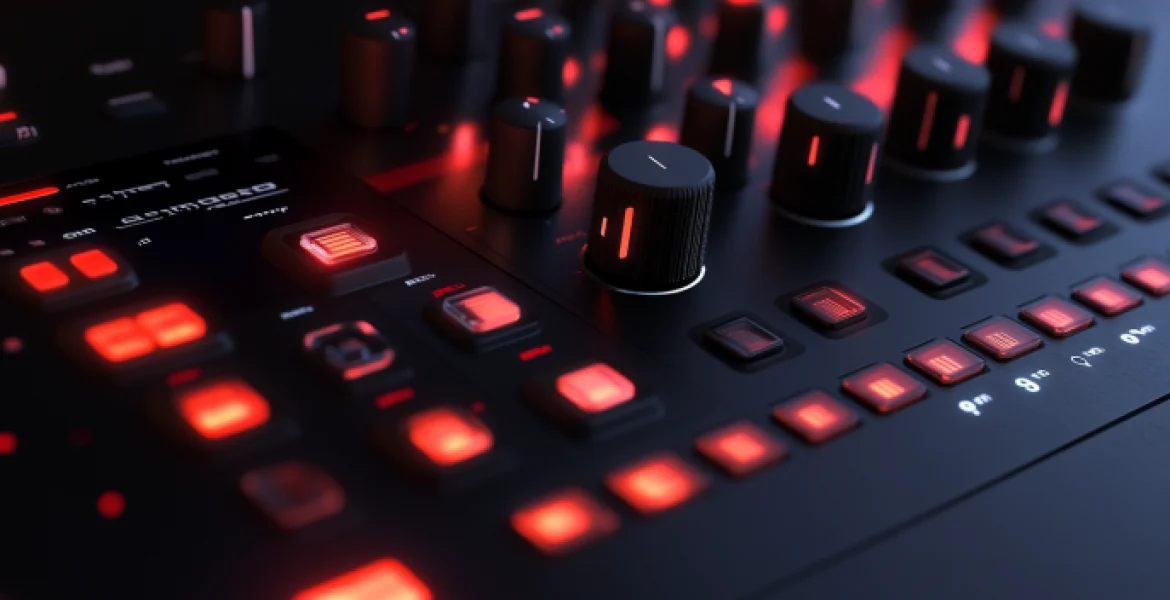
G-MARK Analog Mixer Audio 4 Channel DJ Audio Mixer Bluetooth Studio Karaoke For PC
- 4 Channel DJ Mixer: The audio mixer is great for multiple devices connectivity because it has 4 channels, 2 XLR microphone and 6.35mm input each channel; 1 pairs 6.35mono and stereo
Your Complete Reference for Purchasing the Versatile G Mark Mixer
If you’re looking for a powerful yet affordable audio mixer, the G Mark Audio Mixer should be on your radar. With its flexible connectivity, built-in effects, and intuitive interface, this mixer is a great choice for music production, live performances, podcasting, and more.
But with so many features and specifications to consider, it can be tricky to know if the G Mark is the right mixer for your needs. This comprehensive buying guide will walk you through everything you need to know before purchasing the G Mark Audio Mixer. We’ll cover its standout features, audio quality, use cases, pricing, and comparisons to other popular mixers on the market.
Whether you’re a beginner looking for your first mixer or a pro searching for a rugged, road-ready console, read on to learn if the G Mark delivers the right blend of performance and value.
Overview of the G Mark Audio Mixer’s Key Features
The G Mark Audio Mixer is a medium-sized mixing console with 8 input channels, 4 microphone preamps, 3-band EQ, built-in digital effects, and USB connectivity. It’s designed to handle everything from multi-track recording sessions to front-of-house live mixing.
Some of the most notable features of the G Mark mixer include:
- 8 mono input channels – The G Mark has 8 mono channels with gain and trim control, high-pass filters, pads, and 3-band EQ with swept midrange. This versatile channel strip layout accommodates mics, instruments, keyboards, and more.
- 4 XLR microphone preamps – The mixer has 4 studio-grade XLR mic preamps with phantom power, ideal for connecting professional condenser mics for studio recording and live performances. The preamps deliver clean, low-noise gain.
- High-headroom design – With a robust headphone amp and +22 dBu maximum output level, the G Mark provides ample headroom for dynamic mixes free of clipping and distortion.
- 24-bit, 48 kHz USB audio interface – The built-in USB interface enables direct recording to your DAW at studio-quality resolution. You can also play back tracks from your computer for mixing and monitoring.
- 16 digital effects engines – The G Mark has a suite of 16 digital effects like reverb, delay, chorus, flanger, and tremolo to dial in just the right ambience for lead vocals or add depth to guitar tones.
- 7-band graphic EQ – The mixer includes a 7-band graphic EQ on the main stereo bus for precise tonal shaping and feedback control. Individual channels get 3-band EQ with a swept midrange frequency.
- RCA stereo aux output – You get flexible monitoring and output routing with the dedicated aux send, separate control room and headphone outs, and stereo RCA tape outs.
With its durable metal chassis, hands-on control, and portable form factor, the G Mark mixer is equally suited to studio recording and taking on the road for live gigs.
Ease of Use for All Experience Levels
A common concern when buying an audio mixer is finding one that matches your experience level. You want something with enough features to be powerful, but not so complex that it’s intimidating.
The G Mark Audio Mixer hits a nice sweet spot between beginner-friendly and professional-grade. Even if you’re new to mixing, you’ll appreciate the logical channel strip and master section layout.
Everything is clearly labeled, with one function per knob/fader. Essentials like gain staging, EQ, effects, and main mix levels are adjusted via dedicated controls. Advanced features like USB connectivity, channel mutes and soloing, and XLR inputs don’t get in the way if you don’t need them.
Of course, seasoned engineers will feel right at home too. The hands-on interface is optimized for tactile control, with smooth, responsive faders and knobs. You get the connectivity and routing options expected from a professional live and studio mixer.
So whether you’re recording your first podcast or mixing front-of-house for a major tour, the G Mark has an interface built to handle it. The logical workflow enables quick learning and confident operation.
Flexible I/O for Studio and Stage
One area where the G Mark Audio Mixer shines is its versatile input and output connectivity. The mixer provides the I/O you need for any audio source in the studio or for live performances.
For microphones, you get 4 balanced XLR mic inputs equipped with +48V phantom power for condenser mics. Channels 1 and 2 even include high-impedance direct inputs for instruments like electric/bass guitar, keyboards, and more.
In addition to the XLR inputs, channels 3-8 provide 1⁄4″ TRS line-level connections. You can use these for instruments, headphone outputs from synthesizers, or to connect external preamps and audio interfaces. RCA stereo inputs on channels 7-8 accommodate media players, DJ mixers, and other consumer audio gear.
On the output side, you get flexible options as well. In addition to the main XLR outputs to feed PA speakers, the G Mark provides:
- 1⁄4″ TRS control room outputs – For monitoring and metering
- 1⁄4″ TRS headphone output – For zero-latency monitoring
- RCA tape outputs – For connecting recording devices or additional amplifiers
- 1⁄4″ TRS aux send – For creating monitor mixes and external effects loops
Whether tracking a full band in the studio or mixing a 4-piece rock ensemble live on stage, the G Mark gives you the I/O to handle it. The versatile connectivity ensures compatibility with professional and consumer audio devices alike.
Built-in Digital Effects and Graphic EQ
One of the unique advantages of the G Mark mixer is its integrated digital multi-effects processor. It packs 16 studio-grade effects like reverb, delay, chorus, flanger, and more into one dedicated section.
Having these effects built right into the mixer makes it easy to add polish and depth to vocals, guitars, drums, and other instruments. Just press the effect button on any channel, dial in the amount of effect, and you’re good to go.
The specific effects included are:
- Hall, room, and plate reverb – Essential for vocals and adding space
- Delay – From tight slapback to long, modulated echoes
- Chorus – Thickens and widens instruments like keys and guitars
- Flanger – Sweeping, psychedelic tones
- Phaser – Swirling modulation perfect on Rhodes, clavinet, and more
- Tremolo – Rhythmic volume swells, great for surf guitar tones
- Pitch shift – Thickening and harmonization for vocals
Whether you’re mixing a podcast, singer-songwriter performance, or full band rock/pop show, this collection of effects ensures you can sculpt professional-caliber sounds right within the G Mark.
Complementing the effects is a 7-band graphic EQ on the main stereo bus. Having this EQ directly after the mix fader gives you powerful yet simple tone-shaping and feedback control. It’s a must-have for live sound applications.
Ideal Usage Scenarios for the G Mark Mixer
With its versatile feature set, the G Mark Audio Mixer is a Swiss Army knife mixer suited to a wide range of applications, including:
- Home/project studio recording – The mixer’s USB interface, channel EQs, built-in effects, and RCA tape outs make it ideal as the centerpiece of a home or project studio. Its compact footprint doesn’t dominate your workstation.
- Podcasting – Podcasters will appreciate the 4 XLR mic pres, USB connectivity for DAW recording, and graphical EQ to shape tone and reduce ambient noise.
- Keyboard and electronic musicians – The line inputs, stereo channels, and onboard effects accommodate synths, sound modules, drum machines, and multi-track playback.
- Singer-songwriters – With just vocals, guitar, and maybe keys/bass, the 8-channel G Mark has ample inputs. The EQ, reverb, and vocal effects will make your performances shine.
- Mobile and event A/V – Lightweight and rugged, the mixer can hit the road for speaking engagements, electronic music performance, video/film shoots, and other events needing portable audio.
- Small band live mixing – From coffee shop gigs to clubs, the G Mark has the XLR inputs, EQs, effects, and output routing needed for FOH mixing a 3-5 piece ensemble.
Whether tracking albums at home or mixing concerts on the go, the G Mark mixer will be your trusted audio companion.
How the G Mark Compares to Other Popular Audio Mixers
The G Mark hits a versatile sweet spot between small format mixers and full-sized consoles. But how does it stack up to other popular options that may be on your shopping list?
Here’s a look at how the G Mark compares:
- Vs. Behringer Xenyx mixers – The G Mark costs 2-3X more but adds digital effects, USB connectivity, RCA tape outs, and a more durable metal chassis. Great if you need more I/O and features.
- Vs. Mackie ProFX mixers – The Mackie units have more channels (12-16), but the G Mark counters with built-in effects, FBQ feedback detection, and a similar price.
- Vs. Soundcraft Signature mixers – Compared to the Soundcraft, the G Mark has fewer channels but adds onboard effects and USB. The Signature line has more aux mixes and groups however.
- Vs. Allen & Heath ZEDi mixers – The G Mark has twice the mono channels (8 vs 4) but fewer mic preamps (4 vs 6) compared to the ZEDi. The A&H mixer costs a bit less but skips internal effects.
- Vs. Yamaha MG Series mixers – The Yamahas offer more input channels and groups, but no onboard effects. The MG models also lack USB connectivity present on the G Mark.
The G Mark strikes an excellent balance between channel count, connectivity, effects, and price point. It sits in the sweet spot for home studio and gigging musicians who need more than an entry-level mixer.
G Mark Mixer Pricing and Budget
As you shop for an audio mixer, price inevitably plays a role. Given its feature set and performance, the G Mark Audio Mixer provides excellent value in its price range.
Retailing around $399, the G Mark sits affordably between inexpensive basic mixers and costly advanced consoles:
- Entry-level mixers – $100 to $200
- G Mark Mixer – $399
- Pro 16+ channel mixers – $600+
The versatile I/O, studio effects, EQs, and metal construction make that $399 price seem very reasonable. Finding similar features in other brands usually means jumping up to mixers costing $500 and beyond.
Some ways to keep G Mark mixer costs down include:
- Buy from an authorized online retailer like Sweetwater or Musician’s Friend to avoid inflated prices at big box stores
- Look for holiday sales around Thanksgiving, Christmas, or the 4th of July to potentially save 10-20%
- Check for open box specials and B-stock units which deliver the same functionality at a discount
- Consider a used G Mark mixer in good condition to maximize value
With careful shopping, you can likely grab the G Mark Audio Mixer for around $350, an excellent deal on a quality Swiss Army knife console. This makes it very budget-friendly for home and mobile studios needing professional-grade mixing.
Reviews and Impressions from G Mark Mixer Owners
Beyond just specs and features, it’s helpful to hear real user impressions of the G Mark Audio Mixer. What do owners have to say after mixing albums and performing gigs with this versatile console?
Overall, reviews from both amateur and professional users skew overwhelmingly positive:
- Owners describe the sound quality as “clean”, “accurate”, and “neutral” – perfect for mixing applications.
- Musicians are impressed with how easy it is to get great results fast, even when their mixing skills are limited.
- Users love having so many utilities like EQs, effects, subgroups, and flexible routing in a compact unit.
- The durable metal construction gets kudos for reliability from those using the G Mark mixer heavily.
Any complaints focus on minor areas:
- A few users wish the mixer had a dedicated sound card option for recording, rather than relying on USB audio.
- Some noted the effects, while very usable, don’t rival expensive rack processors. But that compromise is expected given the mixer’s affordable price tag.
- Musicians who need to mix 10+ simultaneous inputs may find the 8 mono channels limiting for bigger bands.
However, for the intended applications like home/project studio recording, podcasting, and gigging with small ensembles, the G Mark satisfies an overwhelming majority of owners. Given its versatility and mid-range price point, this mixer punches far above its weight.
Optimized for Portability and Gigging
For a mid-sized mixer, the G Mark Audio Mixer maintains a surprisingly portable form factor. This makes it an excellent choice for gigging musicians and mobile DJs needing to transport gear between venues.
Some design elements that optimize the mixer for portability and live use:
- Compact, multi-angle design – Measuring just 17 x 13 x 4 inches, the G Mark is small enough for tight stages and DJ booths, with the flexibility to position it flat or angled.
- Durable metal chassis – The rugged metal build, reinforced knobs, and impact-absorbing corner protectors allow the mixer to withstand life on the road.
- Internal switch-mode power supply – Unlike bulky wall-wart adapters, the mixer’s built-in universal power supply keeps setup simple. No easily lost external power bricks.
- Multiple grab handles – Thoughtful touches like the side handle and removable top handle make transporting the mixer easy, even with one hand.
- Lightweight construction – At just 11 pounds, musicians can easily carry the G Mark mixer along with the rest of their audio and stage gear.
The G Mark doesn’t compromise features or audio quality to achieve portability. From the city subway to the rural bar gig, it’s optimized for taking high-quality mixing on the go wherever needed.
Tips for Shopping for the G Mark Audio Mixer
Ready to start shopping for the G Mark Audio Mixer? Keep these tips in mind to score the best deal:
- Buy from an authorized retailer – Sweetwater and Musician’s Friend are safe bets for the legit model covered by G Mark’s warranty. Avoid sketchy Amazon or eBay sellers.
- Consider a bundle – Some retailers offer the mixer bundled with accessories like XLR cables, headphones, a mic, etc. for one low price. Great deal for a whole mixing setup!
- Inspect carefully if buying used – Test every knob, fader, input and output. Seek minimal cosmetic wear and tear. Bring headphones to test channels.
- Factor in sales tax – Remember to account for anywhere from 5% to 10% additional cost depending on your state’s sales tax at checkout.
- Keep the receipt and packaging – This provides proof of purchase for warranty claims. The original box protects the mixer if you ever need to transport it for service.
- Allow time for returns – Buying directly from retailers gives you more time for returns/exchanges versus private party purchases.
Shop around for the G Mark Audio Mixer to find an authorized seller you trust, offering a competitive price and flexible return policy. This ensures you can purchase with confidence and take advantage of any promotions.
Ready to Mix It Up with the G Mark?
In the sub-$500 price range, you’ll have a hard time finding another mixer that packs as many features, connectivity options, and audio quality into one compact unit as the G Mark Audio Mixer.
It truly is the Swiss Army knife of audio mixers – just as adept in the home recording studio as it is handling front-of-house live mixing duty or providing the audio backbone of a mobile DJ rig.
This guide covered everything from its standout features to real user reviews to shopping tips. The bottom line:
If your mixing needs fit within the G Mark’s 8 mono channels, 4 XLR mic pres, and 2 stereo input pairs, it’s hard to find a mixer that will give you more creative options for the money.
Whether you’re ready to finally upgrade from that entry-level mixer that’s been holding you back or want a rugged, road-ready console, the G Mark is a superb choice. It will give you the tools you need to craft pro-sounding mixes for many years to come – all at an affordable price.




